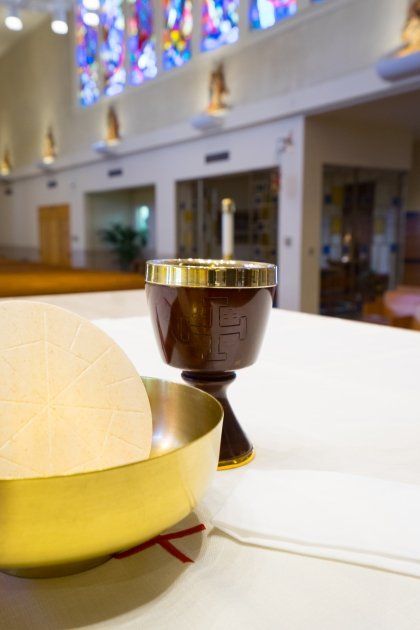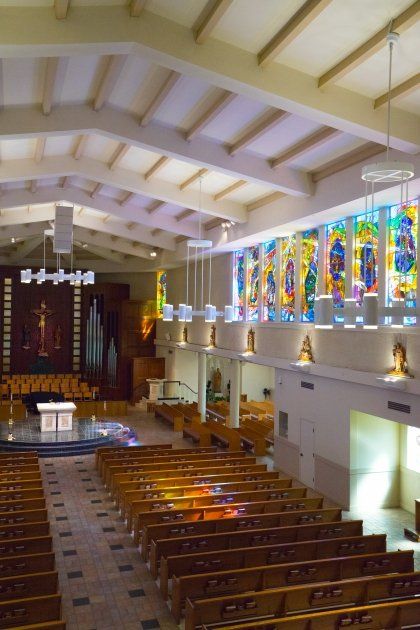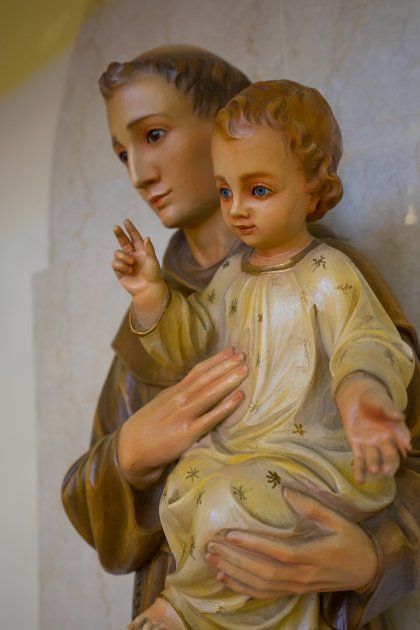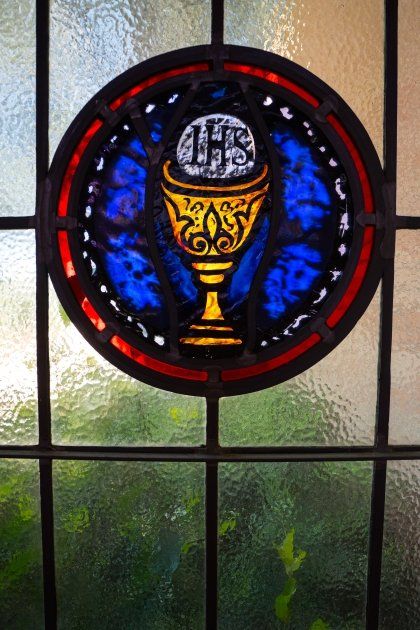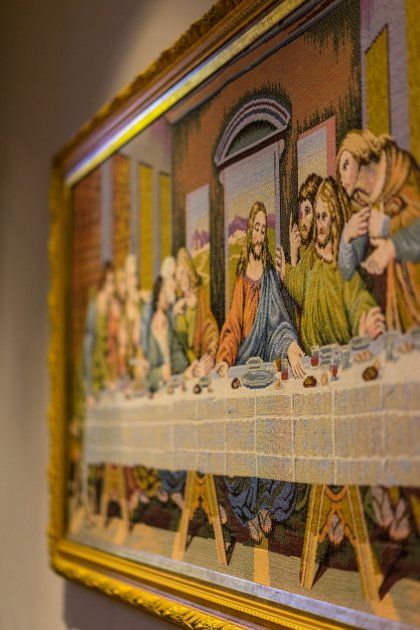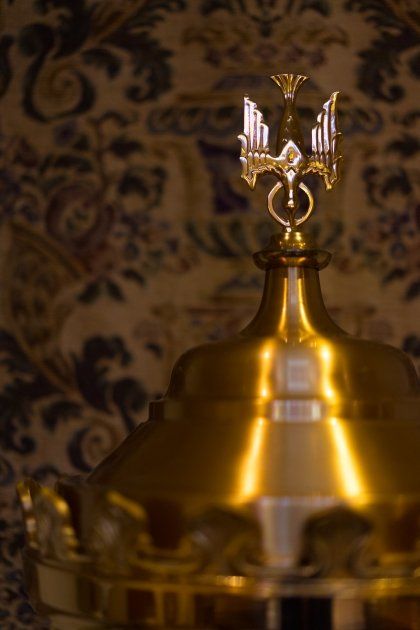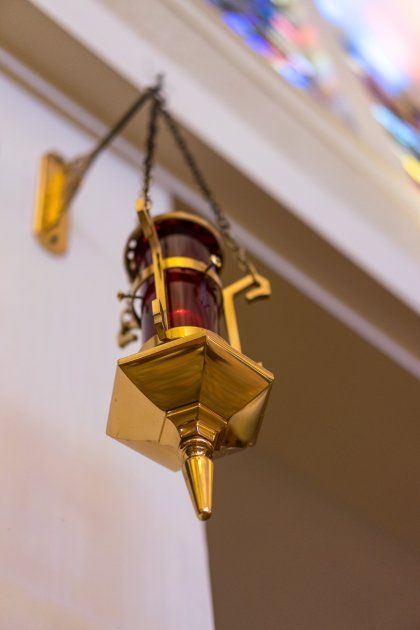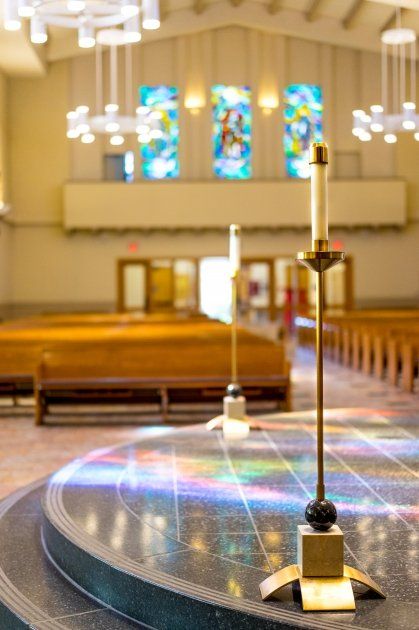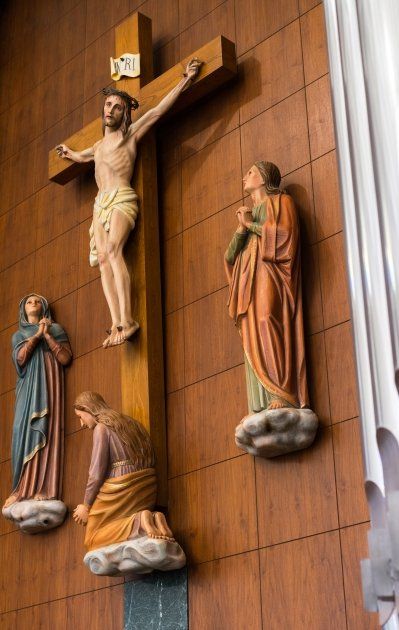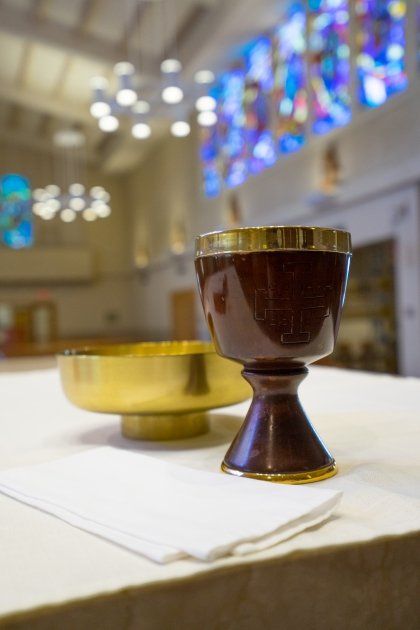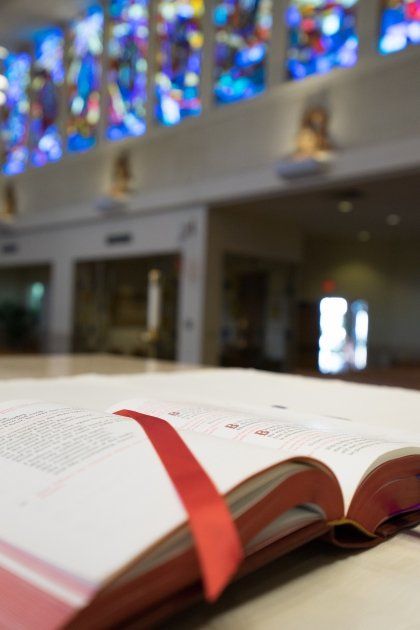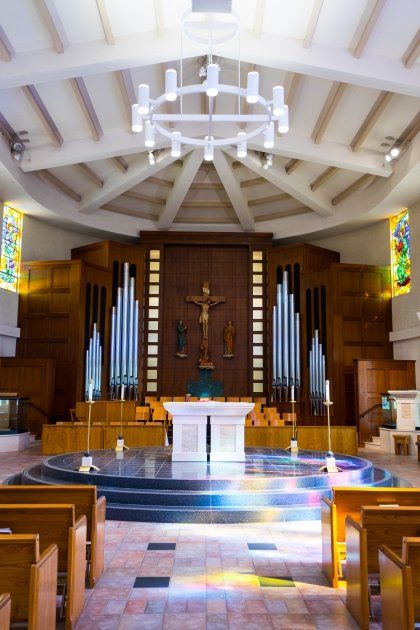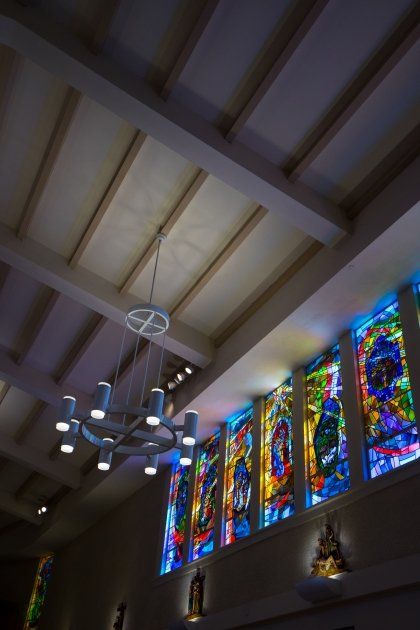Our Patron - Saint Roch
Scarcely 32 years old when he died, it is generally accepted that Saint Roch was born about 1295 in Montpellier, France and died in 1327. St. Roch was the only child of rich and noble parents in southern France. John, his father, descendant of the kings of France, was also governor of their home city of Montpellier. He and his wife, Libera, were good Christian people. They had one cross. It was that they were aging and still childless. God at length heard their prayer. In due time a child was born, a boy, whom they named Roch, (pronounced rock).
Roch responded to the virtuous training his parents gave him. He was twenty when the turning point came to his life. It was the death of his parents. First there was his Christian father. He had hardly laid his aged father to rest amid the pomp due his rank and fortune, when Almighty God asked of him also the sacrifice of the dearest soul he still had on earth, his good mother.
Led by the loss of his parents, he renounced his principality and whatever property there was in favor of his uncle. The rest of his rich inheritance he sold and distributed among the poor. He kept nothing for himself but a "PILGRIM'S GARB" and pittance. It is not known how he meant to spend his life; only that his thought for the time being was of making a pilgrimage to Rome, to visit the tomb of the Apostles.
The plague was abroad in Italy when Roch went afoot on his pilgrimage. Reaching a town called Aquapendente, he found St. John's hospital filled with the plague stricken. He offered his assistance to the head of the hospital. What time was left over from his day's work in the hospital, Roch spent in visiting and waiting on the sick in their homes. The people were agape at what they saw. Amazement gave way to veneration for this youth who was like the Archangel St. Raphael in the flesh to these people.
Secretly he stole away and went to Rome. There he satisfied his devotion to the holy Apostles. But he found more of the same kind of work waiting for him there. The mortality from the plague was frightful in Rome.
Other towns visited and similarly blessed by St. Roch were Cesena, Modena, Parma, Piacenza. God had his own designs in bringing Roch to Piacenza. His hard days of personal charity were to end with grievous sufferings. Roch became an invalid, suffering steadily the severest kind of pain. In addition, he found himself afflicted with the plague. Leaving the hospital where he had been placed, rather than be a burden to others, he found his way out into the country to a little hut on the Trebbia River.
To all other suffering, there was now added that of complete abandonment by everybody when they should have helped him in his need as he had helped them in theirs.
But God did not abandon him. Tradition has it that rainfall helped refresh him and slaked his thirst, and when he at length felt the appetite for something to eat, a well-groomed hound appeared with a fresh roll between his teeth.
Learning that the plague had flared up again in Piacenza, yet hardly able to get about, he went to town daily to tend the victims, returning each night to his dilapidated hut.
The day came, however, when Roch felt called to return to his native city. He was about 27 at this time. He had been away for perhaps five years and the sufferings he had endured had so changed his appearance that nobody recognized him in Montpellier. He had in fact little time to be recognized. The region was at war, and he found himself picked up as a spy and thrust into jail the moment he arrived. For five years, up to his death, Roch remained in prison, apparently forgotten by the authorities over the stress of war. The day of release finally came, but it was also the day of release from the prison of the body. Roch knew that the time was at hand and asked for the last rites.
From papers found on his person and presently from the strange sign of the Cross which was his birthmark, Roch was known for the prince-heir that he had been. The sequel also disclosed an offering he had made of his life, so that whoever should seek his help against contagion, should have his request granted by cure or preservation.
Miraculous happenings followed Roch's death. Not only did the governor and all the surviving members of the relationship come forward to acknowledge their kinsman with a magnificent funeral, there was a steady issue of cures upon invocation of his name. A special church was built to enshrine the remains. Many years later in 1414, when the plague broke out at the General Council of Constance, it was a ready thought to invoke the aid of the saintly "pilgrim." His image was carried about in procession with the astounding result that the plague abated at once. The fame of this event was spread by the members of the Council to every corner of Europe and devotion to Roch increased rapidly.
Popes Urban VIII and Innocent XII instituted the feast in honor of "St. Roch."
The images of St. Roch show him either ministering to the sick or alone, attired in pilgrim's cloak and cap. A staff is in his hand, with the traditional pilgrim's wallet, sometimes indicated as· a scallop on his shoulder. A dog is at his side, recalling the story of his rescue on the Trebbia at Piacenza. At times he points to a mark on his side or his thigh, indicating either the storied birthmark or the pain which attacked him at Piacenza.
Today St. Roch is one of the popular saints, as a patron against diseases, notably as a healer of contagion of all kinds.
In life and after death, his life was a continuous miracle in this regard, and public veneration of his holy memory was for that reason never interrupted.
The main details of St. Roch's life were taken from the life of the Saint by Francesco Diedo, a venetian nobleman who in his day was governor of Brescia. This life was compiled near the main scene of the saint's activities in northern Italy and published in 1327.




